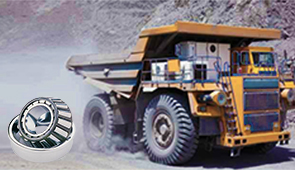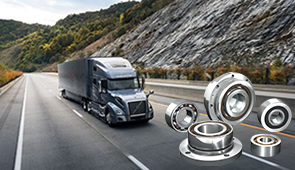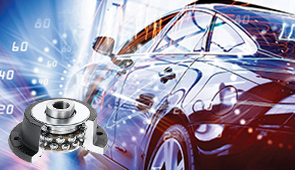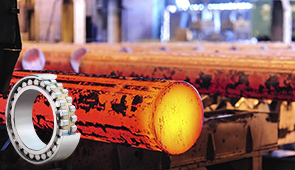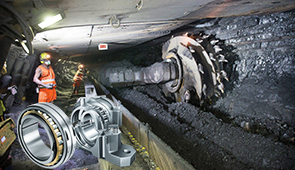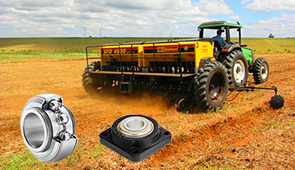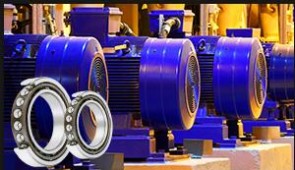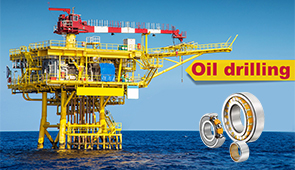Cam Roller Bearings: Unleashing the Power of Rollers and Cam Follower Bearings
Cam roller bearings and cam follower bearings are essential components in modern mechanical systems, known for their ability to handle complex motion and load requirements with precision and efficiency. These bearings are extensively utilized in a wide range of industrial applications, from automated manufacturing systems to heavy-duty machinery, where reliability and performance are paramount. This article will explore the design principles, operational mechanics, and diverse applications of cam roller and cam follower bearings, providing readers with a comprehensive framework for understanding their significance in engineering and motion control systems. Through detailed explanations and technical insights, we aim to highlight how these components contribute to the functionality and durability of high-performance equipment.
What are the key features and benefits of cam roller bearings?
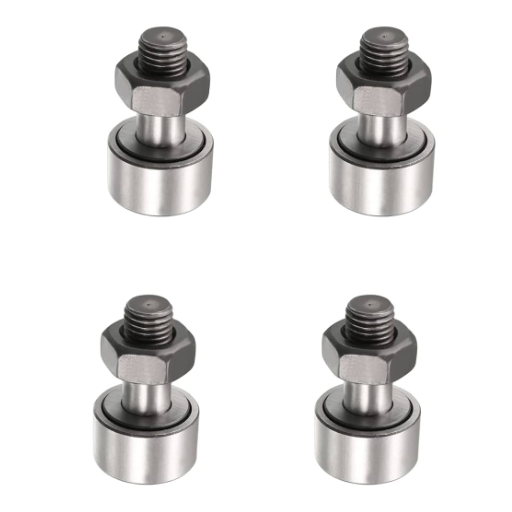
High load capacity and durability
Cam roller bearings were designed to withstand considerable radial and axial loads, making them ideal for extreme performance applications. The capacity of these bearings is largely attributed to the optimized geometry of rolling elements and raceways which reduces stress concentrations and permits even distribution of loads. Usually, these bearings are made from high-tensile steel and some other alloys that provide high resistance to abrasion, deformation, and fatigue.
- Dynamic Load Rating (C): Illustrates the bearing’s capacity to withstand dynamic loads for long operational spans, usually more than 10,000 N depending on the configuration.
- Static Load Rating (C₀): This represents its capacity to endure static loads without permanent deformation, commonly reaching values upwards of 15,000 N in heavy-duty models.
- Hardness (Rockwell Scale): The strength of construction materials is usually rated at 58-62 HRC on the Rockwell scale which guarantees resistance to abrasion in the long term.
- Operating Temperature Range: Other designs and types, however, seem to manage normal functioning between -20 ° C and +120 ° C while specialized bearings seem to exceed this at either end.
These combined features enable cam roller bearings to maintain exceptional reliability and durability under high-stress conditions and repetitive operational cycles which make them an essential component for conveyor systems, heavy machinery, and automated manufacturing lines.
Smooth operation and reduced maintenance
To ensure smooth operation and reduced maintenance, I focus on selecting components that align with the specific requirements of the application. Cam roller bearings, for instance, are chosen for their durability and low friction properties. They are designed to minimize wear through precision engineering and optimized load distribution.
- Load Capacity: Avoiding overload operational conditions is achieved by reasonably setting the appraisal demand for the dynamic and static load rating of the bearings.
- Lubrication Requirements: High-performance lubricants are used so that friction reduces and also increases the service intervals. In many cases, there is very little replenishment that needs to be done especially in sealed systems.
- Misalignment Tolerance: More sophisticated self-aligning bearings are made to absorb shaft and housing misalignment to avoid excessive forces on the bearings.
- Maintenance Intervals: When the right bearing fits are made in the correct environment, the only maintenance needed is regular visual checking which greatly reduces maintenance and servicing costs.
Following these technical stipulations allows for achieving efficient working of the machines and eliminating system downtimes due to maintenance.
Where are cam roller bearings commonly used?
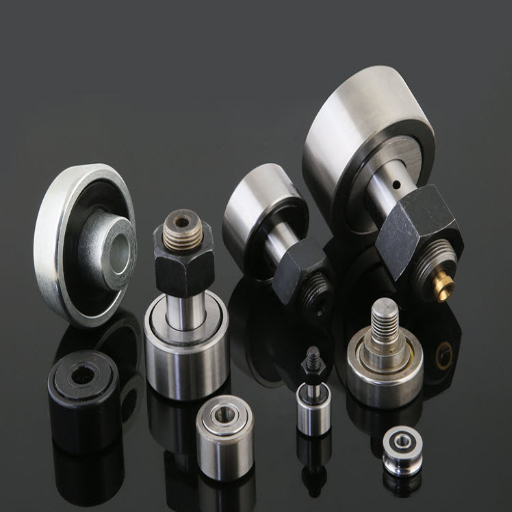
Industrial machinery applications
Cam roller bearings are often found in automated assembly systems, material handling devices, packaging systems, and textile manufacturing machines due to their ability to perform well while handling high radial loads and moderate axial forces. I also know they can be found in automatic production machines. These bearings are favored where alignment challenges and hardened working conditions prevail because of their low upkeep requisite.
- Load Capacity: The axial load these bearings can accommodate varies between models and designs. These bearings can support anywhere from 500 to 10,000 N with ease, so it’s certain that they can endure the rigorous impacts of drones.
- Speed Ratings: They function best at 200 to 2,000 RPM, any higher usually ends up needing more advanced lubrication support.
- Material Composition: Fluctuating load and wear resistance is achieved through using hardened steel or stainless steel.
- Operating Temperature: Most cam roller bearings function reliably between -20°C and 120°C, although high-temperature variants can tolerate up to 200°C.
These bearings will sustain efficiency and offer increased service life as long as the performance standards and operating needs are aligned.
Automotive Industry Uses and Key Technical Parameters
The automotive industry relies on cam roller bearings for their exceptional performance under high dynamic loads. These components are frequently found in timing belt drives, guiding elements, steering linkages, and suspension systems. Additionally, cam roller bearings are used because of their superb rigidity and long life, making them essential in maintaining reliability and efficiency in the automotive industry.
- Load Capacity: The automotive cam roller bearing is engineered to endure radial and axial loads from 500 N to 1,500 N as per the required application.
- Durability: The wear resistance rating is over 50 HRC (Rockwell Hardness Scale) due to the hardened steel or stainless steel having a high composition which provides excellent durability.
- Speed Capability: Standard cam roller bearings can sustain rotation up to 5,000 RPM and some specially designed high-performance cam roller bearings can exceed this limit up to 10,000 RPM.
- Operating Temperatures: The bearings are designed to work within -20 degrees Celsius to 120 degrees Celsius for normal engine conditions. Some high-temperature variants can endure and function around 200 degrees Celsius under prolonged use.
- Sealing and Lubrication: The bearings feature powerful seals to prevent contaminants from entering but will require periodic lubrication or have pre-lubricate solutions to lower maintenance requirements.
Cam roller bearings are functional in highly demanding automotive conditions, enhancing the performance, safety, and durability of vehicle parts, which is why they live up to these technical specifications.
Aerospace and other specialized applications
Cam roller bearings are important to aerospace and other niche fields because they are designed to perform under harsh operating conditions. For these industries, such bearings are made to work under stringent conditions such as high loads, high-speed rotational movements, and extreme temperatures within the range of -100˚C to +250˚C. Moreover, to enhance the durability while keeping the weight low – which is essential in the design of the aircraft components – corrosion-resistant steel or ceramics, and titanium alloy are also used.
- Load capacity: these systems’ highly advanced components require that the bearings endure axial and radial loads ranging from 5000 N to 25,000 N.
- Operating temperature range: the performance of standard aerospace bearings is not affected at temperatures within -100°C to +250°C.
- Speed rating: the rotational speed of turbines or rotor systems using these bearings must be over 25,000 RPM.
- Material specifications: extreme atmospheric conditions are effortlessly withstood due to the corrosion-resistant material’s (AISI 440C Steel, Hybrid Ceramic) ability.
Other application areas like robotics, medical engineering, or other areas of precision instrumentation employ cam roller bearings which are critical for providing required accuracy and reliability for smooth functioning. Bearings in robotics, for example, require ultra-low friction, high-accuracy positioning, and strong and repetitive abductive tasks, all of which require bearings with runout of minimal axial value and tolerance of ± 1 μm. These attributes make marine roller bearings crucial in meeting demands set out by highly advanced and precise conditions.
How to choose the right cam roller bearing for your application?
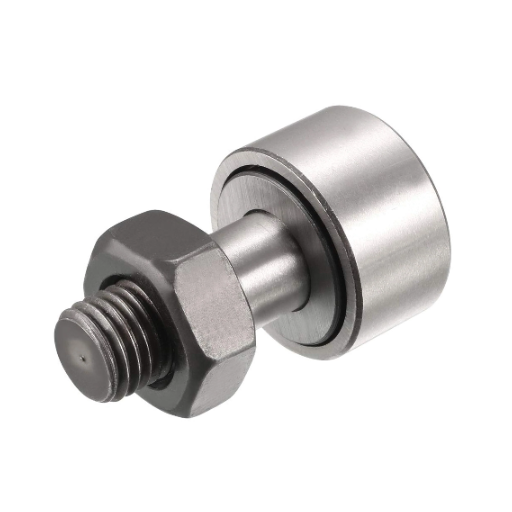
Considering load ratings and bearing size
In trying to find a suitable cam roller bearing for my needs, I first focus on the load ratings and bearing size. These factors are critical to achieving the desired performance. When dealing with load ratings, I pay attention to the static load rating (C₀) as well as its dynamic load rating (C). As its name suggests, the static load rating evaluates the maximum heavy, motionless, applied load without alteration and the dynamic load rating evaluates the capability to bear repetitive motion, other than shifts in position over time. To safeguard against bearing failure, I ensure that the load rating is greater than the maximum reasonable expectation.
For bearing size, I take into consideration the diameter of the shaft as well as the dimensions of the housing unit to ensure a match with the design parameters of the system. On another note, bigger bearings have the potential to bear more load but can generate additional friction and require extra space. My job at this stage is to find the sweet spot.
- Static Load Rating (C₀): Measures the upper limit of non-dynamic loads. The traditional unit of measure is kN.
- Dynamic Load Rating (C): Upper limit of energetic loads associated with measurable lifespan under dynamic loads. The unit of measure is similarly kN.
- Tolerance Class: The class enables the matching and fitting of components and dimensions. The ISO or ABEC designations grade these.
- Dimension Constraints: Customized outer diameter, bearing diameter, and bearing width to fit the available space.
Concerning these conditions, I ensure precise alignment with the operational and structural needs of my application.
Selecting the appropriate materials and coatings
When selecting materials and coatings for my application, I focus on properties that directly impact performance, durability, and environmental compatibility. For materials, I evaluate the following key factors:
- Corrosion Resistance: When there is an application that necessitates water and chemicals to stand together, stainless steels (440C), or coated steels (zinc or nickel plated) provide better protection.
- Thermal Stability: In high-temperature situations, ceramics or heat-treated alloys prove to be the best materials because they underperform at thermal stress.
- Wear Resistance: Materials like hardened steel or those treated with surface-hardening processes improve long-term performance under high friction.
With coatings, I consider the following attributes:
- Lubrication Requirements: PTFE or Modified Molybdenum Disulfide can be utilized to reduce wear and eliminate the need for frequent lubrication.
- Protective Layers: For components using steels or hard coatings and those used in surface hardening treatments like carburizing, withstanding high friction over time greatly improves the longevity of the component.
- Anti-Corrosion Coatings: Chroming plating, epoxy coating, and galvanization have proven to extend the life of various parts that stand under corrosive environments. With proper coatings in place, one can be sure rust formation is dealt with.
By customizing materials and coatings for the application’s stress profile, environmental conditions, and functional priorities, I can make certain about prolonged service life and optimal performance.
Evaluating mounting options and configurations
While choosing materials and coatings for my application, I ensure that each context has structural integrity, serviceability, and operational environment compatibility. With regards to the materials, I consider:
- Load Capacity and Stress Resistance: For the considerations of Significant stress-bearing materials, I put my trust in high carbon and stainless steel. Their tensile strength ensures major heavy load-bearing capability without any distortion. This is crucial in particular uses that relate to yield strength exceeding 250Mpa or ultimate tensile strength (UTS) surpassing 500Mpa.
- Corrosion Resistance: In regions with chances of moist, saline, or aggressive chemicals, I choose either stainless (440C) or zinc-coated steels (oxidation and pitting resisting). The choice is facilitated through analysis of corrosion rates and length of environmental exposure.
- Wear Resistance: For abrasive or high-friction conditions, I heavily consider wear-resistant surfaces and hardened steel which has been treated with surface hardening techniques like carburization, achieving a level of at least 50 HRC (Rockwell hardness scale).
- Thermal Stability: For applications exceeding 500F (260C) I look for alloys or ceramics that do not undergo melting during thermal extremities as well as maintain their mechanical properties.
Every step taken is guaranteed to meet the load ratings, operational tolerances, and zero precision dimensions while maintaining system functionality throughout the lifecycle.
What maintenance is required for cam roller bearings?
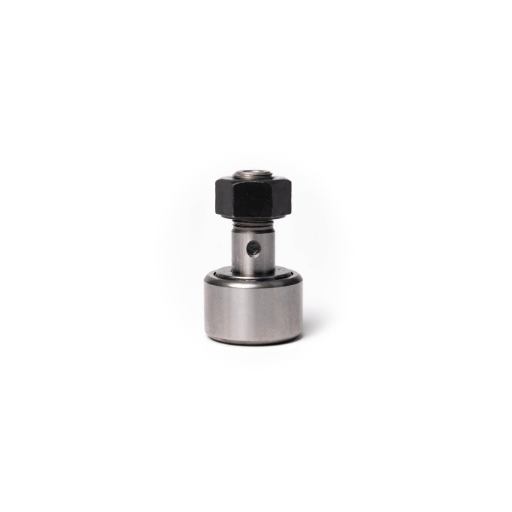
Lubrication requirements and schedules
To keep cam roller bearings optimally functional for longer, I follow a strict lubrication routine, guided by the manufacturer’s recommendations, and the state of the equipment. Maintenance lubricants will mitigate friction, limit wear and tear, and ward off contaminants.
- Lubrication type: I utilize high-quality grease or oil with specifications suited to the application. For most standard operations, I use lithium-based grease with good thermal stability and viscosity ranging between ISO VG 68 and 220, depending on the load and speed requirements.
- Application Frequency: Under routine conditions, I renew lubricants after every 250-500 hours of use. In case of strenuous tasks or operations with high speeds, I may have to reapply as often as every 250 hours.
- Quantity Control: While under-lubricating proves to be harmful, overusing lubricants is equally detrimental. Based on the bearings manufacturer, I carefully make sure to use an adequate level of grease to avoid overheating and increased resistance.
- Environmental Considerations: In conditions that pose severe contamination – dust, humidity, chemicals, etc – I perform more frequent inspections along with replacing the lubricant more often to sustain the functionality of bearings.
These procedures in close monitoring of the lubrication system render the bearings functional with all of the desired characteristics within their allotted lifecycle.
Inspection and replacement guidelines
Inspection Frequency: The frequency of inspections is determined by operational parameters and intervals of equipment usage. During normal conditions, bearing examinations are done every 1,000 hours of operation during the scheduled maintenance workouts. However, in demanding conditions, unscheduled bearing inspections are performed every 200 to 500 hours to avoid failures.
- Key Indicators: During inspections, I look for signs of wear such as abnormal noise, vibration, overheating, or visible physical damage. Using tools like vibration analyzers and infrared thermometers allows me to detect early signs of deterioration with greater precision.
- Replacement technical: The criteria for replacement ranges from exceeding tolerances, such as excessive wear, internal clearance being greater than the maker’s limits, and the presence of spalling and pitting on rolling elements and raceways. Grease that is highly contaminated or degraded also indicates the need for replacement, but it is essential to weigh the option of replacement against re-lubrication to gauge which choice is more cost-effective.
- Justification of technical: The thresholds of intervals and tolerances are true to the system manufacturer documentation, operational load limits, and data from historical performance metrics. For example, when working with loads 20% higher than the design threshold, the lifecycle reduction achieves proportional alignment as bearing life estimation outlines in the standard requirements.
By sticking with these well-defined technical requirements, alongside ensuring thorough documentation of inspection and replacement activities, I managed to optimize operational reliability while minimizing unplanned downtimes.
How do cam roller bearings compare to other bearing types?
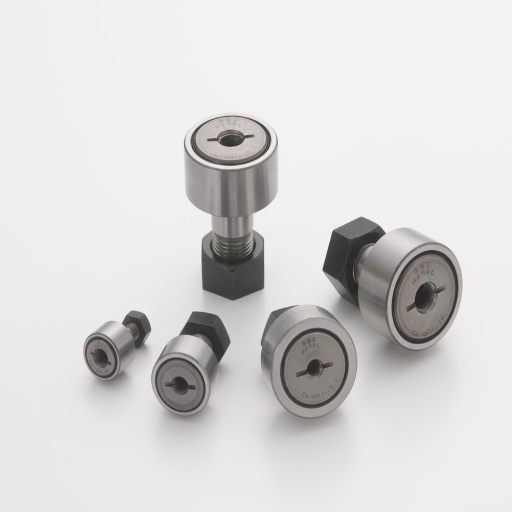
Cam roller bearings vs. standard roller bearings
The design and uses of Cam roller bearings are very different from standard roller bearings. Cam roller bearings are designed to bear radial and axial loads jointly for operations with angular alignment such as in cam mechanisms or linear motion systems. They optimize performance by integrating a thick outer ring that is crowned or has a cylindrical shape, which lowers edge stresses. This design modification mitigates stress and enables smooth operations on track surfaces. They are well suited for environments where movements need to be directed.
On the other hand, guided movements or the geometry that comes with the contact surface are not a priority with standard roller bearings. The primary focus is radial or axial loads. Some of the important technical specifications would be load capacity, contact pressure limits, and speed limits.
- Load Capacity: Cam roller bearings of the same dimension as standard radial ball bearings are capable of bearing significantly high dynamic radial loads.
- Contact Pressure: Optimal pressure distribution is maintained by crowned profiles which reduce localized stress concentrations.
- Speed Limits: Compared to standard roller bearings, cam roller bearings usually support lower speeds because of the solid structure and design.
By leveraging their unique characteristics, I can select the appropriate bearing type to ensure efficient operation based on system requirements and operational constraints.
Advantages over plain bearings in high-load applications
Because of their design and material properties, cam roller bearings outperform plain bearings in high-load applications. For one, cam roller bearings are capable of enduring greater static and dynamic loads because of the rolling contact mechanism, which lessens friction and wear for bearings operating under heavy loads. This is opposed to plain bearings which use sliding contact that increases frictional heat generation during extreme loads.
- Load Capacity: Cam roller bearings have a higher load rating because the forces on the rolling elements reduce surface contact stress.
- Friction Coefficient: Cam roller bearings employ a rolling contact mechanism, providing a lower friction coefficient than observed with the sliding movement of plain bearings, resulting in increased efficiency.
- Wear Resistance: Cam roller bearings have better wear-resistant materials and surface treatment even during sustained high-load cycles.
Taking into consideration all factors, I can conclude that cam roller bearings are more durable and operationally efficient in demanding applications compared to plain bearings which would either fail or require extensive maintenance.
Frequently Asked Questions (FAQs)
Q: What are cam follower bearings?
A: Cam follower bearings, also known as track rollers, are specialized bearings designed to follow a cam or track surface. They typically consist of a stud, an inner ring, rollers (often needle rollers), and a particularly thick-walled outer ring. These bearings are crucial in applications involving linear motion or rotary-to-linear motion conversion.
Q: What are the main types of rollers and cam follower bearings?
A: The main types include stud-type cam followers, yoke-type cam followers, and heavy-section roller stud followers. Stud-type followers have a threaded or plain stud for mounting, yoke-type followers are designed to fit over an existing shaft, and heavy-section followers are built for high-load applications. Each type can be further categorized based on the roller type, such as needle roller or cylindrical roller followers.
Q: How do cam followers differ from standard bearings?
A: Cam followers are designed with a particularly thick-walled outer ring to withstand high radial loads and shock. Unlike standard bearings, they often have a crowned outside surface to reduce edge stresses and improve load distribution. Additionally, cam followers are typically used in applications where the outer ring acts as the rolling element against a mating track or cam surface.
Q: What are the advantages of using needle roller cam followers?
A: Needle roller cam followers offer several benefits: 1. High load capacity due to the large number of rolling elements 2. Compact design allowing for use in space-constrained applications 3. Low friction, resulting in reduced heat generation and improved efficiency 4. Ability to operate at high speeds 5. Long service life when properly lubricated and maintained
Q: How are cam followers typically mounted?
A: Mounting methods vary depending on the type of cam follower. Stud-type followers are usually mounted using a threaded stud that can be screwed into a tapped hole or secured with a nut. Yoke-type followers are designed to fit over an existing shaft and are often secured with snap rings or other retaining devices. Some cam followers also come with an integral flange for bolt-on mounting in certain applications.
Q: What are some common applications for cam follower bearings?
A: Cam follower bearings are widely used in various industries and applications, including: 1. Conveyor systems and transfer lines 2. Packaging machinery 3. Textile equipment 4. Printing presses 5. Automotive assembly lines 6. Robotic systems 7. Cam mechanisms in engines 8. Material handling equipment 9. Agricultural machinery 10. Industrial automation systems.
Q: What are the benefits of using cam followers with a crowned outside surface?
A: Cam followers with a crowned outside surface offer several advantages: 1. Reduced edge stresses, which helps prevent premature failure 2. Improved load distribution across the bearing 3. Better accommodation of misalignment between the follower and the mating track 4. Reduced sensitivity to shaft deflections 5. Minimized risk of binding or seizing in the track These benefits contribute to longer bearing life and improved overall system performance.
Q: How are cam follower bearings lubricated?
A: Lubrication methods for cam followers vary depending on the design and application. Some common lubrication approaches include: 1. Grease lubrication through a fitting in the stud or outer ring 2. Oil lubrication via holes or grooves in the bearing 3. Sealed designs with pre-lubricated bearings for maintenance-free operation 4. Open designs that rely on the overall system lubrication Proper lubrication is crucial for maintaining low friction, preventing wear, and ensuring long bearing life.
Q: What materials are typically used in cam follower bearings?
A: Cam follower bearings are usually made from high-quality bearing steel. The outer race is often made from induction-hardened steel for increased wear resistance. The inner ring and rollers are typically made from through-hardened bearing steel. For corrosive environments, stainless steel versions are available. The cage, which separates the rollers, can be made from various materials including steel, brass, or high-performance polymers, depending on the application requirements.
UCTH213-40J-300 with Setscrew(inch)
CNSORDERNO: Normal-duty(2)
TOGN: UCTH213-40J-300
SDI: B-R1/8
SD: 2 1/2
UCTH212-39J-300 with Setscrew(inch)
CNSORDERNO: Normal-duty(2)
TOGN: UCTH212-39J-300
SDI: B-R1/8
SD: 2 7/16
UCTH212-38J-300 with Setscrew(inch)
CNSORDERNO: Normal-duty(2)
TOGN: UCTH212-38J-300
SDI: B-R1/8
SD: 2 3/8
UCTH212-36J-300 with Setscrew(inch)
CNSORDERNO: Normal-duty(2)
TOGN: UCTH212-36J-300
SDI: B-R1/8
SD: 2 1/4
UCTH211-35J-300 with Setscrew(inch)
CNSORDERNO: Normal-duty(2)
TOGN: UCTH211-35J-300
SDI: B-R1/8
SD: 2 3/16
UCTH211-34J-300 with Setscrew(inch)
CNSORDERNO: Normal-duty(2)
TOGN: UCTH211-34J-300
SDI: B-R1/8
SD: 2 1/8









